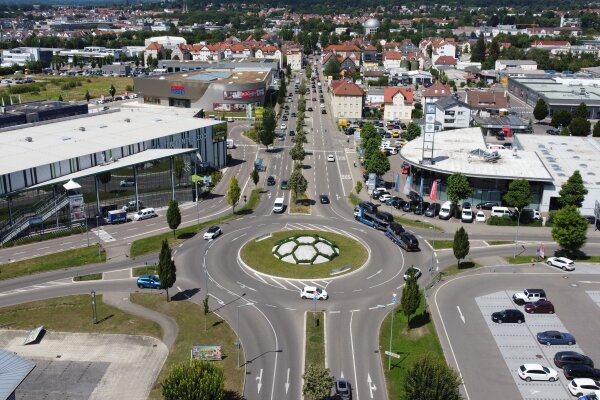03.03.2023

For research work on "turbo roundabouts", Julian Schmitz, research assistant at the Chair of Transport - Planning and Management, together with colleagues from the Technische Universität Dresden, invites everyone with a driving licence to take part in an online survey. After extensive analyses of traffic and accidents at turbo roundabouts, the online survey will be used to develop further potential for optimisation concerning reservations, signage and orientation at such roundabouts.
In so-called "turbo roundabouts", drivers decide where they want to go before they enter and choose the appropriate lane accordingly. Although there are several lanes on the approaches and in the circle in places, it is no longer possible to change lanes in the circle. The advantage of this design is that it offers greater capacity.
But what is important for drivers to feel safe on roundabouts? How can the roundabout be crossed on foot or by bicycle? How can accidents be avoided? In addition to the previous analyses and research results, the online survey aims to find further answers to improve the design of "turbo roundabouts".
The survey is part of a research project commissioned by the Federal Highway Research Institute.
Click here for the article in the RUB Newsportal.
For research work on "turbo roundabouts", Julian Schmitz, research assistant at the Chair of Transport - Planning and Management, together with colleagues from the Technische Universität Dresden, invites everyone with a driving licence to take part in an online survey. After extensive analyses of traffic and accidents at turbo roundabouts, the online survey will be used to develop further potential for optimisation concerning reservations, signage and orientation at such roundabouts.
In so-called "turbo roundabouts", drivers decide where they want to go before they enter and choose the appropriate lane accordingly. Although there are several lanes on the approaches and in the circle in places, it is no longer possible to change lanes in the circle. The advantage of this design is that it offers greater capacity.
But what is important for drivers to feel safe on roundabouts? How can the roundabout be crossed on foot or by bicycle? How can accidents be avoided? In addition to the previous analyses and research results, the online survey aims to find further answers to improve the design of "turbo roundabouts".
The survey is part of a research project commissioned by the Federal Highway Research Institute.
Click here for the article in the RUB Newsportal.